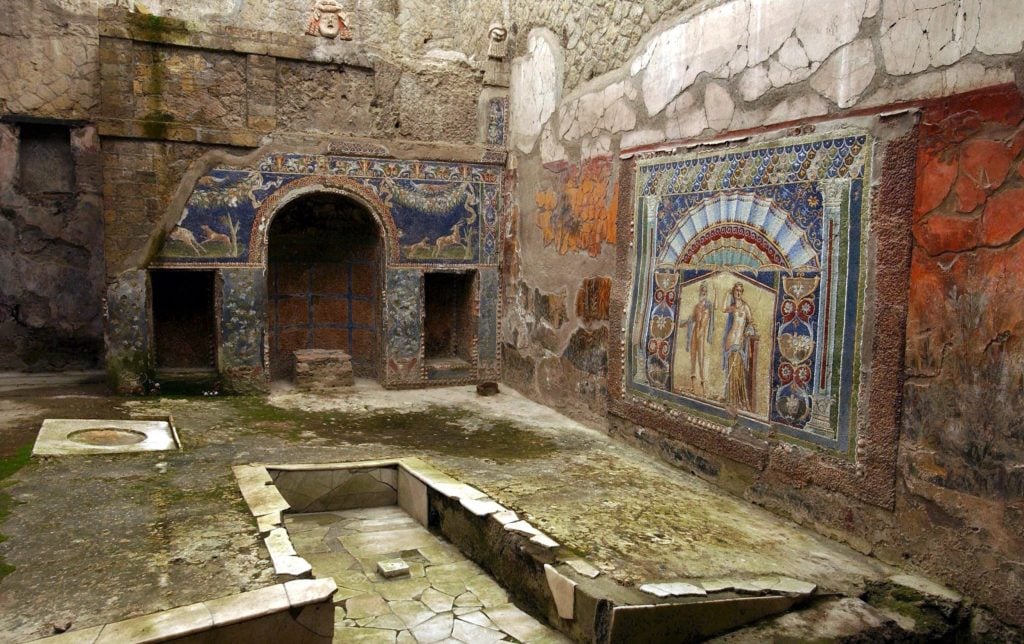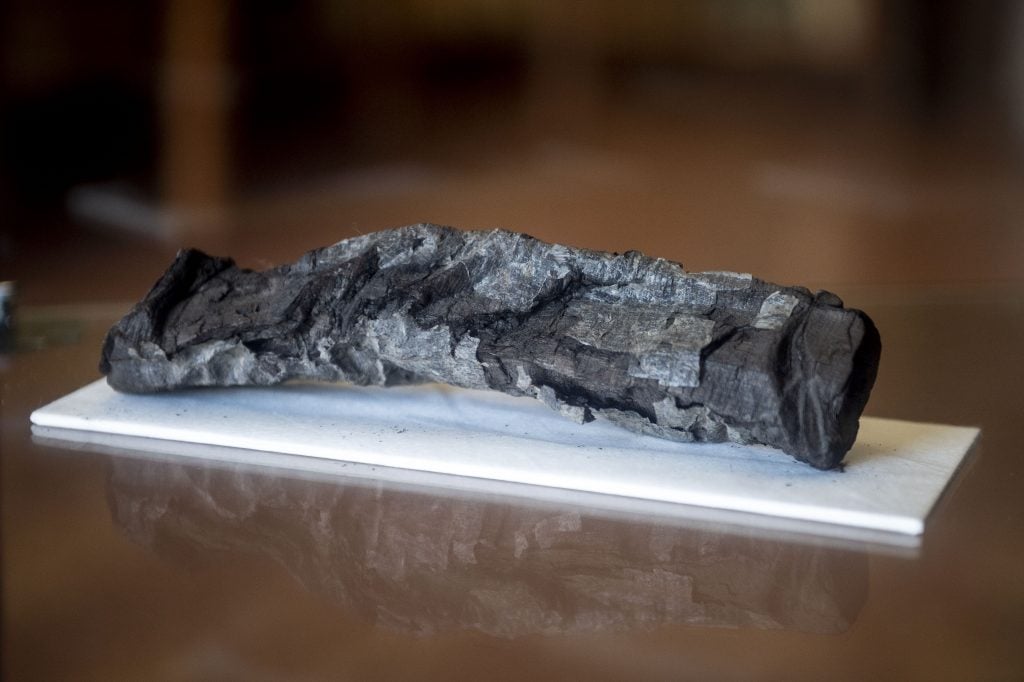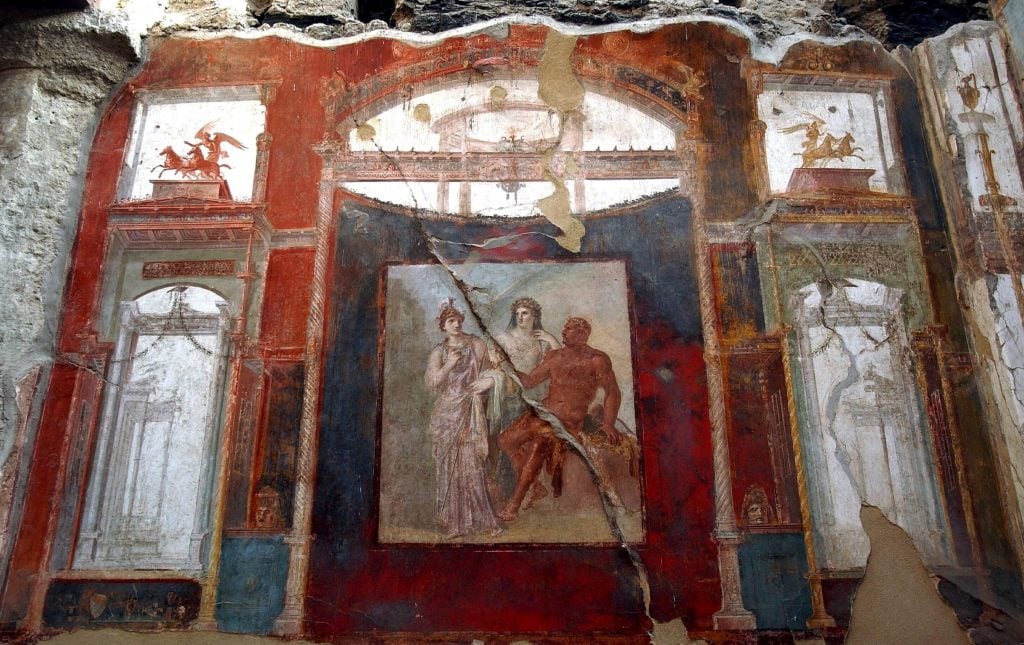Archaeology & History
The Hunt: The Ancient Scrolls That Survived a Volcanic Event
About 1,800 papyrus scrolls were found in ancient Herculaneum, buried under ash and volcanic debris.

When Mount Vesuvius erupted in the summer of 79 A.D, a pyroclastic flow, a superheated concoction of gas, ash, and volcanic rock, roared down the mountain’s slopes, obliterating everything in its path. Herculaneum, an ancient Italian city at the mountain’s western foot, was smothered. The molten flow carbonized organic materials and instantly killed the city’s inhabitants. The city remained buried and forgotten for centuries, until its accidental rediscovery in the 18th century.
Somewhat poetically, though Vesuvius’s eruption devastated Herculaneum, it also preserved its ruins hermetically. A blanket of ash and debris sealed the city’s sites and their contents from pillagers and the elements, preserving them for future archaeologists’ excavation.

The Villa of the Papyri in Herculaneum, Italy, 2003. Photo: Eric Vandeville / Gamma-Rapho via Getty Images.
One such site is the Villa of the Papyri, a luxurious seaside home that belonged to a wealthy Roman. Upon investigation of the villa, lumps of charcoal found and almost discarded were soon revealed to be charred scrolls, indicating the discovery of the only surviving entire library from antiquity. Over 1,800 papyrus scrolls were recovered, but they were too delicate to handle, crumbling to ash at any attempt to unroll them.

A Herculaneum papyrus scroll in the National Library of Naples in Italy. Photo: Antonio Masiello/Getty Images.
The rarity and potential significance of the scrolls cannot be overstated by Classicists, who live to learn all they can about the intellectual and literary culture of the Roman Empire. Papyrus scrolls never survived Greece or Italy’s wet climate, so the corpus of textual fragments available for study is extremely limited. The thought of adding to that collection thrills experts and enthusiasts. The possibility recently became a reality thanks to the advent of A.I technology that digitally unfurls the otherwise too-fragile scrolls, granting access to their secrets.
The first deciphered scroll was a script by the philosopher Epicurus, celebrating the delight of eating capers. Experts predict, based on the scale of the Villa of the Papyri, that its library could hold 40,000 scrolls that might contain lost knowledge from some of the greatest writers and thinkers of history including Sophocles, Epicurus, and Aristotle. Roman philosopher Cicero called Aristotle’s work “a river of gold,” but his dialogues have all been lost to the ages. So far, all discovered texts have been in Greek, however it is understood that Greek and Latin sections of libraries of the era were kept separate.

The Villa of the Papyri in Herculaneum, Italy, 2003. Photo: Eric Vandeville / Gamma-Rapho via Getty Images.
There is controversy amongst archaeologists on how to proceed. Classicists are fiending to dig for more treasure, of course, but further excavation would require the upheaval of the modern city built on top of ancient Herculaneum. Some experts argue to focus on the 1,800 scrolls in hand before searching for more, while others insist that the time for digging is now, before Vesuvius erupts again and all hope is lost.
The Hunt explores art and ancient relics that are—alas!—lost to time. From the Ark of the Covenant to Cleopatra’s tomb, these legendary treasures have long captured the imaginations of historians and archaeologists, even if they remain buried under layers of sand, stone, and history.





